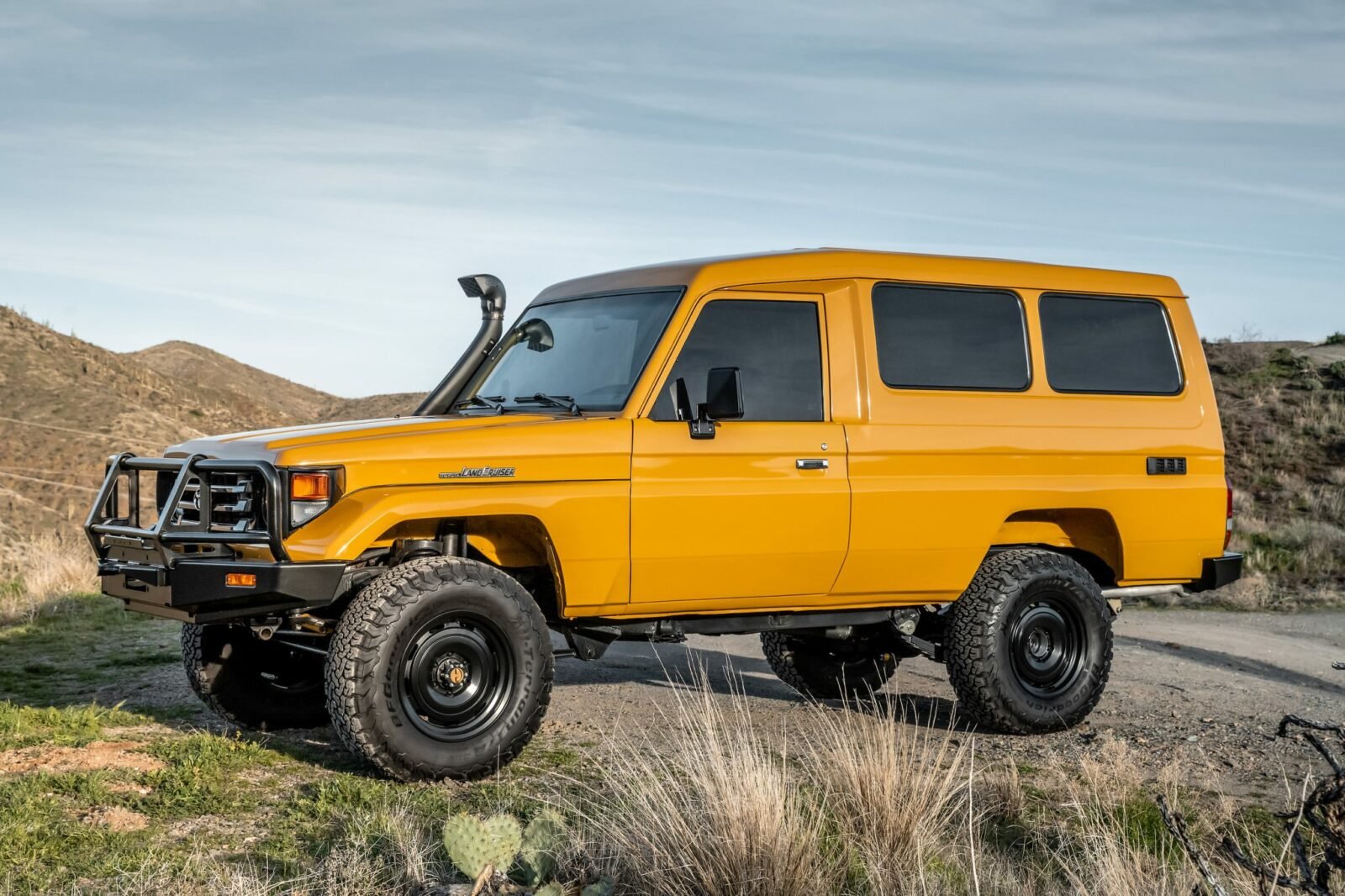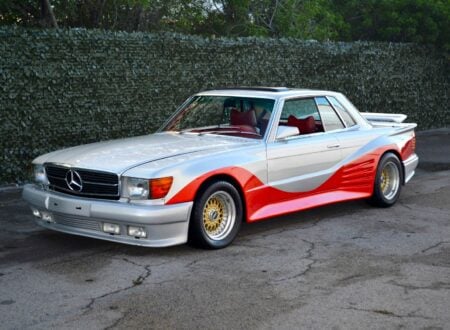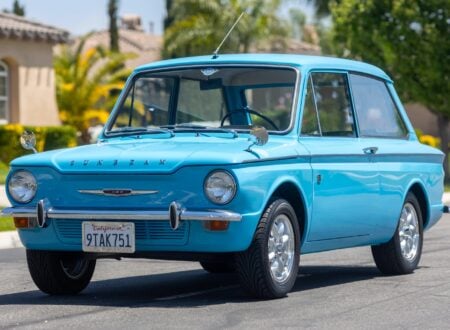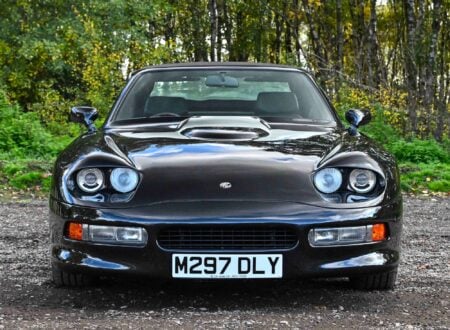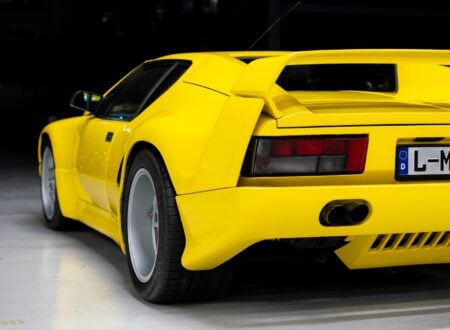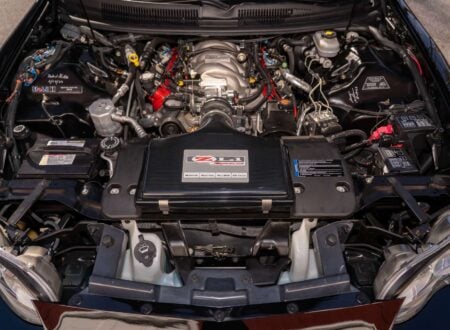The Land Cruiser 70 Series Troop Carrier has long been known as the “Troopy” in Australia, one of the countries where it has sold in the highest numbers and become a common part of the landscape in many rural regions.
The secret to the enduring success and popularity of the Troopy is its adaptability, the body design is essentially a pickup truck with a fully covered rear that can be set up to carry cargo, people, sheep, hay bales, or anything else you might need to move from point A to point B.
Fast Facts – The Land Cruiser 70 Series “Troopy”
- The Land Cruiser 70 Series was launched in 1984. It was designed to replace the outgoing Land Cruiser 40 Series and accompany the more luxurious Land Cruiser 60 Series in Toyota’s 4×4 model range.
- The Troop Carrier variant, nicknamed the “Troopy” was specifically tailored to meet the needs of military, police, and other organizations that required a rugged and reliable off-road vehicle for transporting personnel and equipment.
- Although the Troop Carrier was developed for military and police use it found its real home in civilian ownership in Africa, Australia, and South America. It was used extensively in agriculture and land management, and for transportation services – in Africa it was nicknamed the “Bush Taxi.”
- The Land Cruiser 70 Series has enjoyed a remarkably long production run, with certain models still in production today almost 40 years after it was first introduced. Its rugged construction, off-road capabilities, and reliability have made it a popular choice among off-road enthusiasts, adventurers, and various organizations worldwide.
The Land Cruiser 70 Series
The Land Cruiser 70 Series was introduced in 1984 as a response to the growing demand for a more modern version for the long-in-the-tooth Land Cruiser 40 Series that had originally been launched over 20 years earlier in 1960.


The 70 Series was designed to replace the Land Cruiser 40 Series and offer more modernity and comfort, without losing any of the legendary off-road ability of the earlier model series. The Toyota engineers assigned to the job did such a good job that versions of the 70 Series remain in production today almost 40 years later, a much longer lifespan than the 40 Series.
The more luxurious Land Cruiser 60 Series was introduced in 1980, it was a more luxurious model range and both the 70 and 60 Series would be offered side-by-side at Toyota dealers, each catering to its own unique demographic.
The Land Cruiser Troopy Variant
The Troop Carrier, or Troopy, was specifically designed to cater to the needs of military, police, and other organizations that required a rugged and reliable vehicle capable of transporting personnel and equipment in challenging off-road conditions.
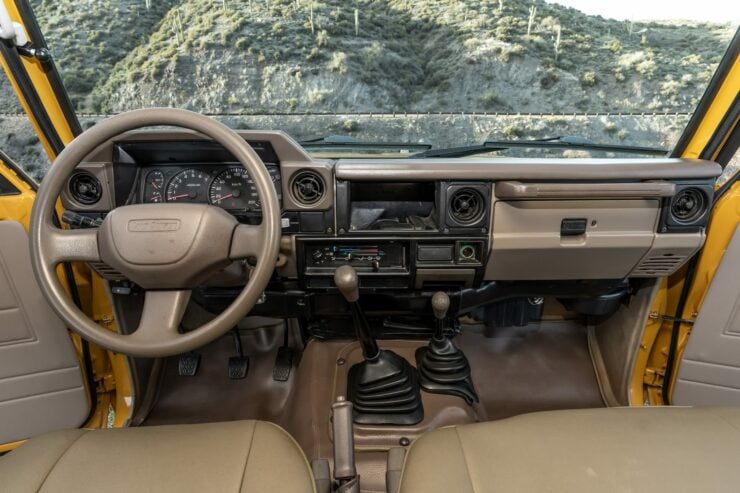

As the name suggests, the Troop Carrier had much more seating capacity than other Land Cruisers, they could carry up to 12 people (including the driver), making it an ideal choice for troop transport.
The Troopy featured a long wheelbase and a high roofline, providing ample space for passengers and cargo. In essence, the design was a pickup truck with a fully enclosed rear section not dissimilar to the popular Australian “Panel Vans” of the 1970s and 1980s.
Having the rear section fully enclosed meant that it was far more civilized for passengers seated in the back, it also offered protection from the elements, and transporting livestock was simpler as you didn’t have to worry about the animals making a jump for freedom.
With its body-on-frame construction, solid axles, rugged suspension, and famously reliable engine options, the Troopy was built to withstand decades of abuse – and many of them have, with resale value remaining strong.
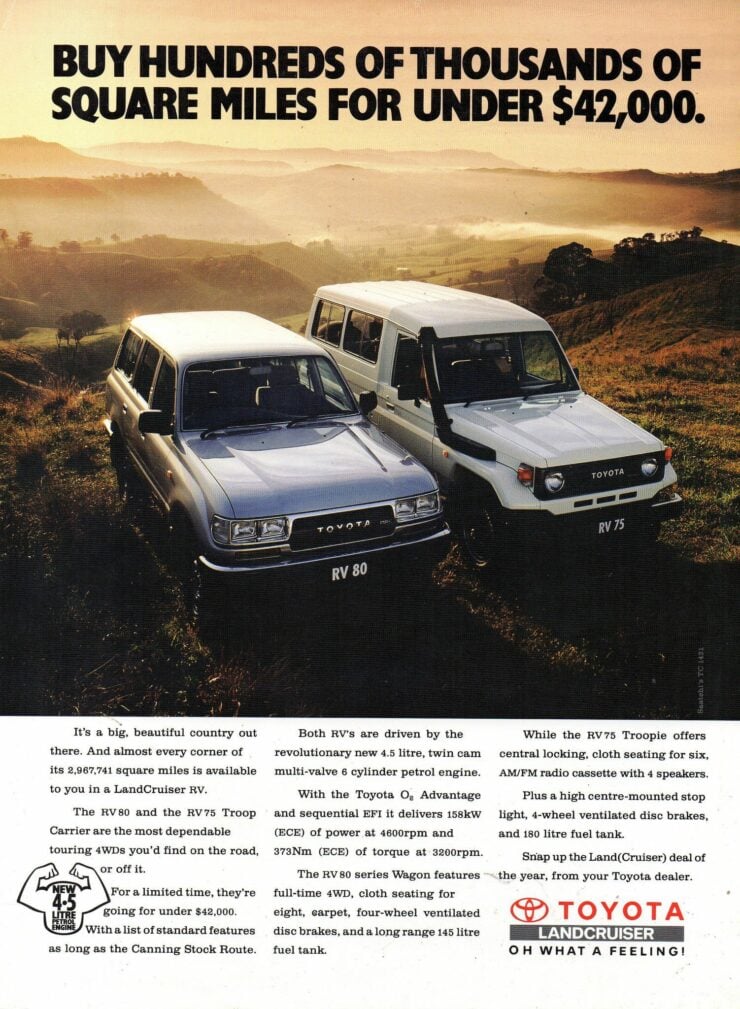

Thanks in no small part to the modern “Van Life” movement the Troopy has become a favorite vehicle for 4×4 camper conversions in Australia and beyond, allowing people to get to much more remote locations than a normal van.
Demand for 70 Series Land Cruisers remains so strong in countries like Australia that the order books actually had to be closed temporarily in early 2023 until the lengthy waiting list could be reduced to a more manageable level. So it seems likely that Toyota will keep the model family in production for some time yet.
The 1994 Toyota Land Cruiser Troopy Shown Here
The vehicle you see here started life as a South American Land Cruiser FZJ75 Troop Carrier based in Venezuela. It was acquired in 2019 after an engine overhaul and it was imported into the USA in 2021 during the Pandemic.
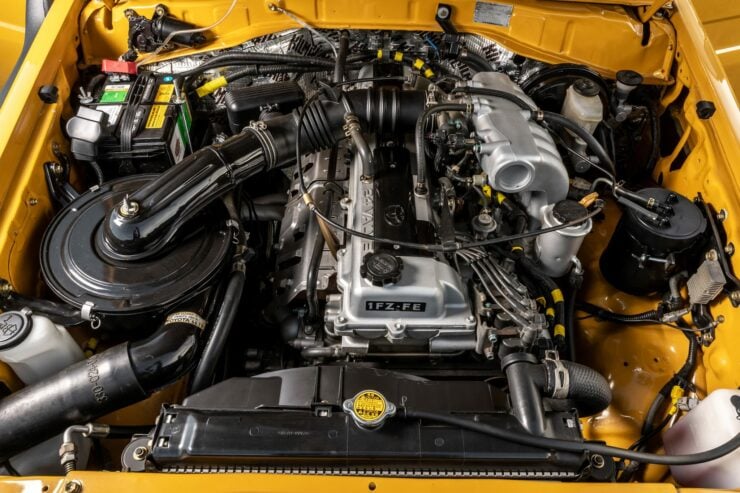

Since it arrived Stateside it’s been subjected to a series of major refurbishments including a full body-off repaint in yellow. Additional work included seam-sealing the floors and replacing the grille, windshield, weatherstripping, side mirrors, marker lamps, and taillights.
This vehicle now also has tinted windows, IPF headlights, a Safari snorkel, an ARB front bumper with a brush guard, an ARB rear bumper, an Old Man Emu 2″ suspension lift, a steering stabilize, braided brake lines, and an Aisin primary brake cylinder.
The interior was improved by reupholstering the front bucket seats in tan vinyl, replacing the color-coordinated door panels, refinishing the body-color sheet metal, a new tan vinyl floor liner, and it has air-conditioning.
It’s powered by a 4.5 liter 1FZ inline-six which was overhauled under prior ownership, and the engine has been converted to electronic fuel injection under current ownership using Toyota components. Power is sent back through a 5-speed manual transmission and a dual-range transfer case.
It’s now being offered for sale out of Scottsdale, Arizona with spare parts, import documents, and a clean Arizona title in the seller’s name. If you’d like to read more about it or register to bid you can visit the listing here on Bring a Trailer.
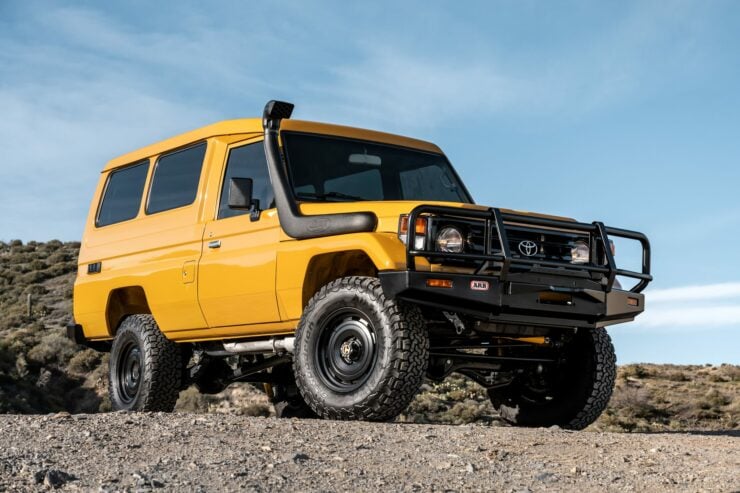
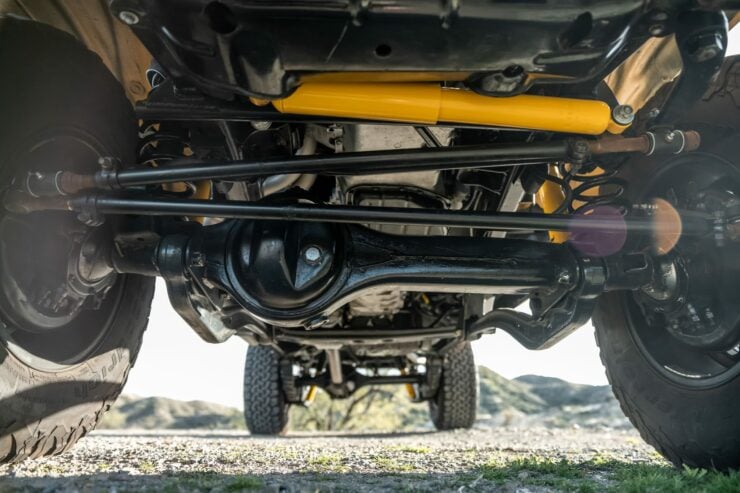

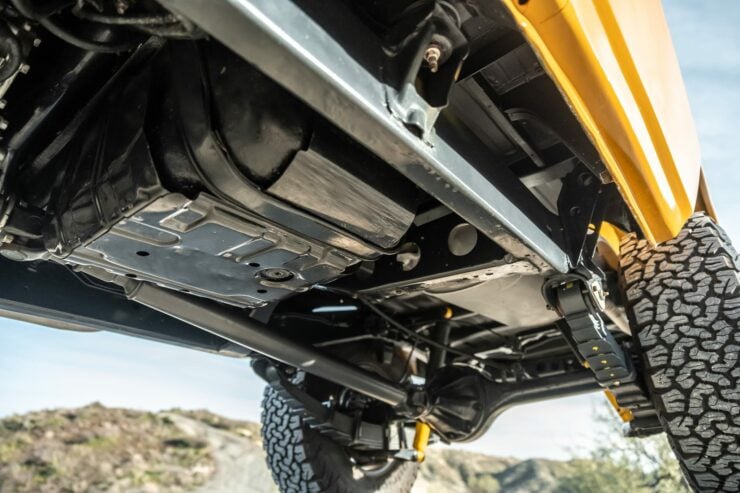
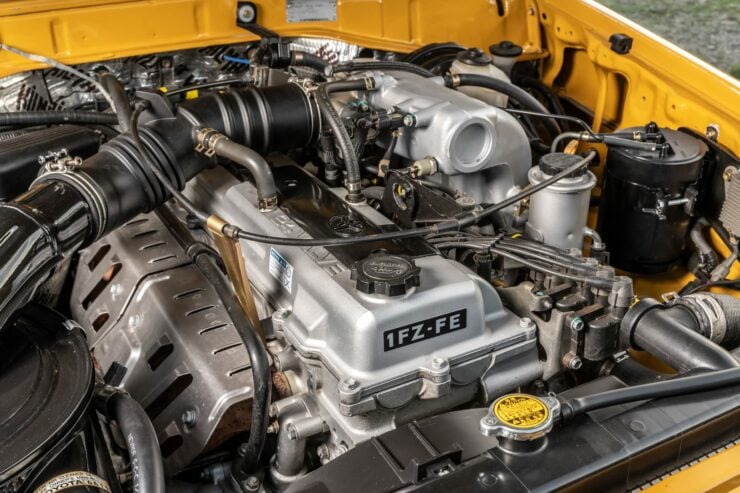
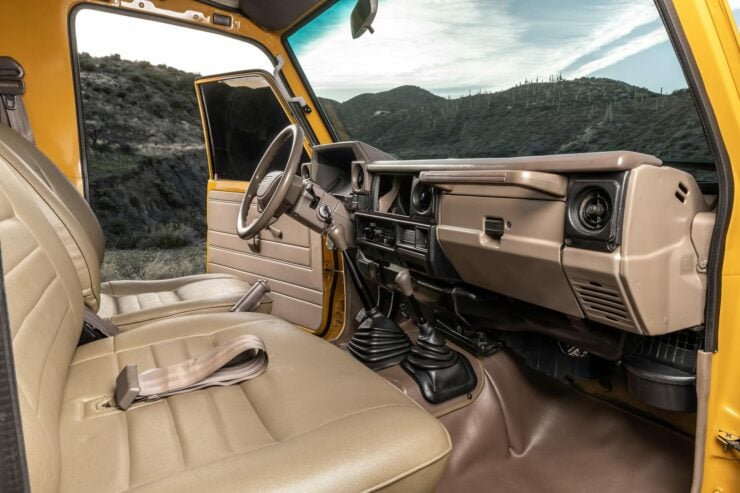
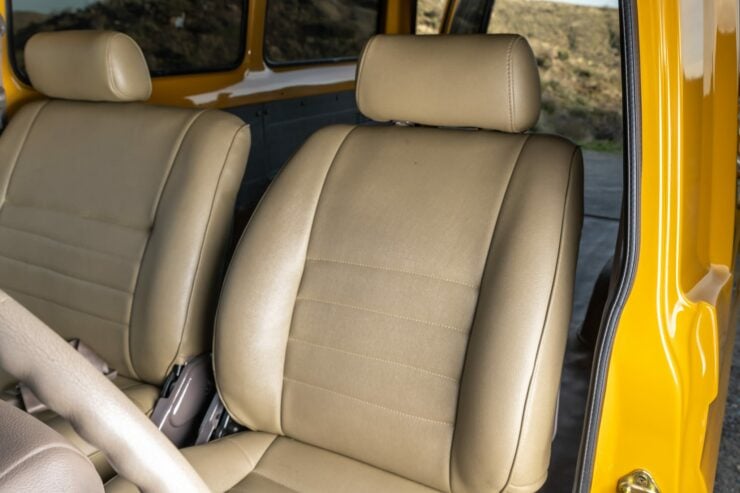
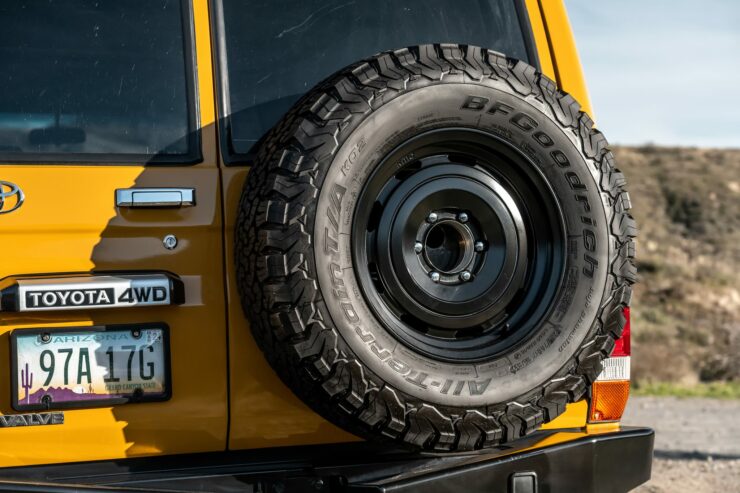
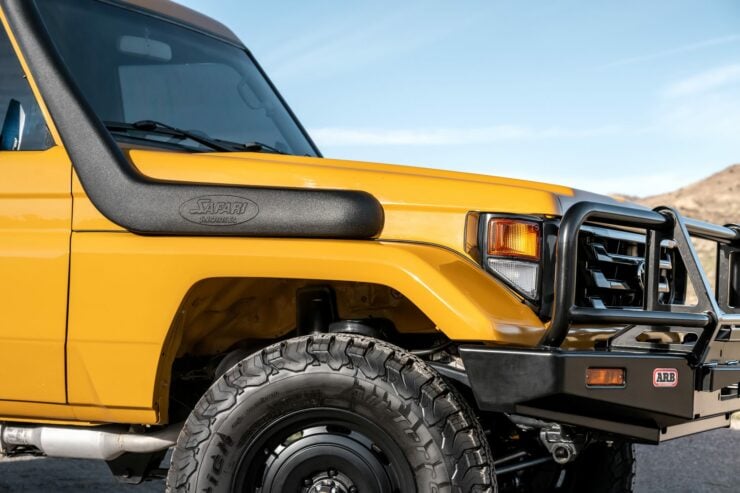
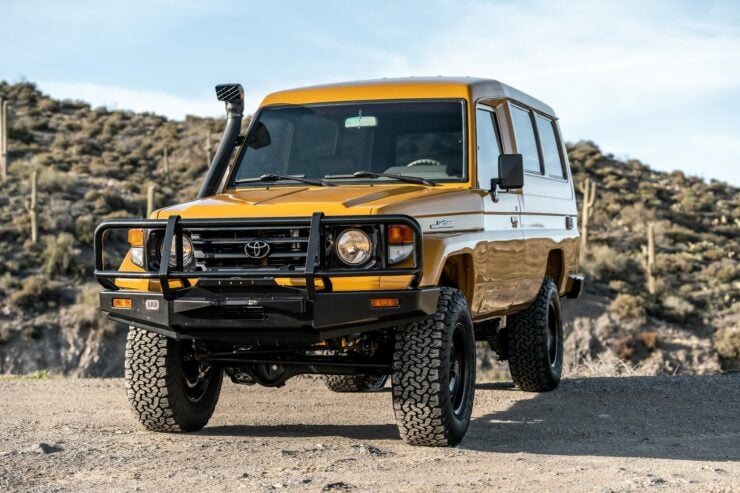
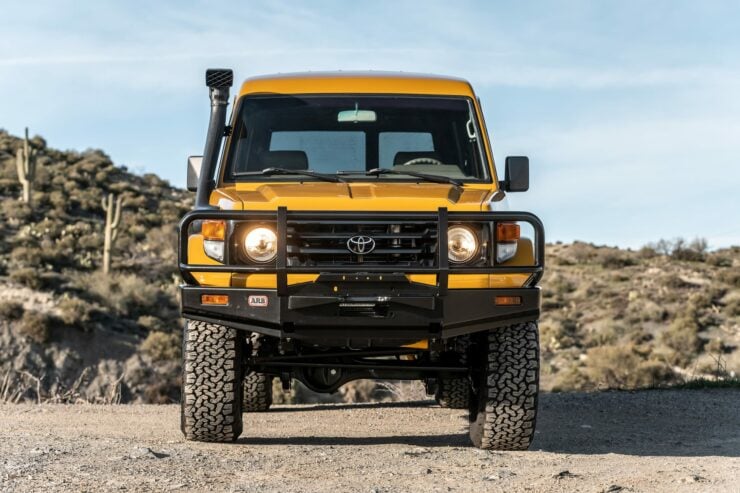
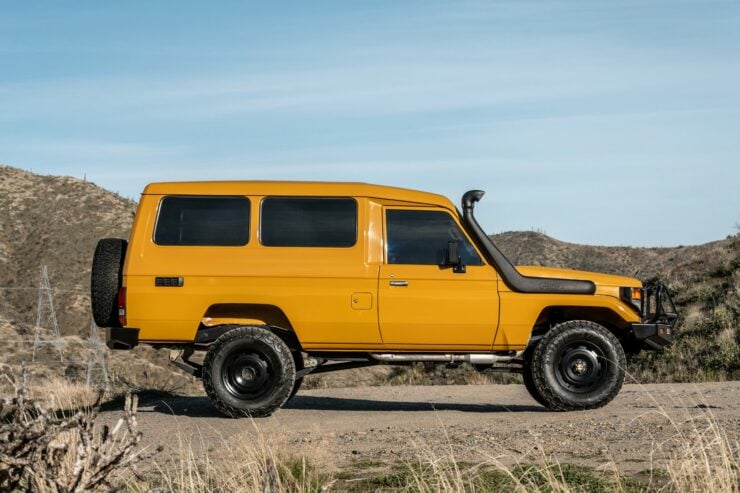
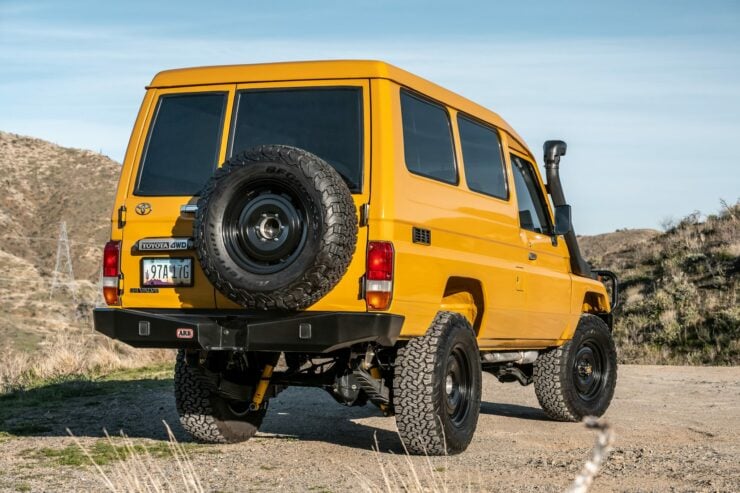
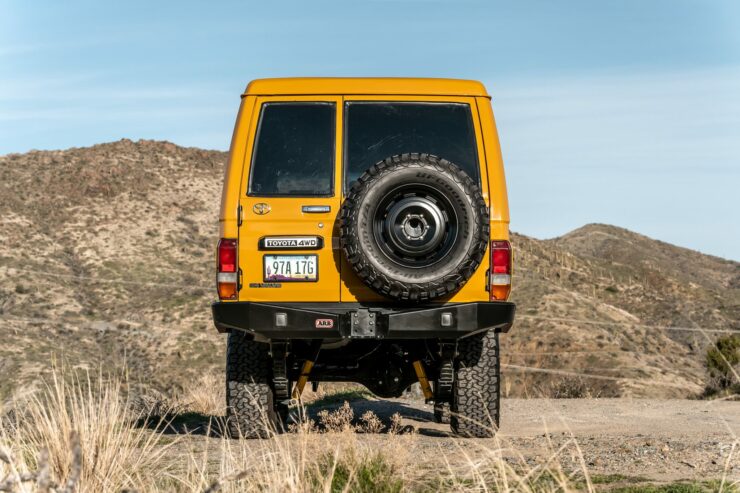
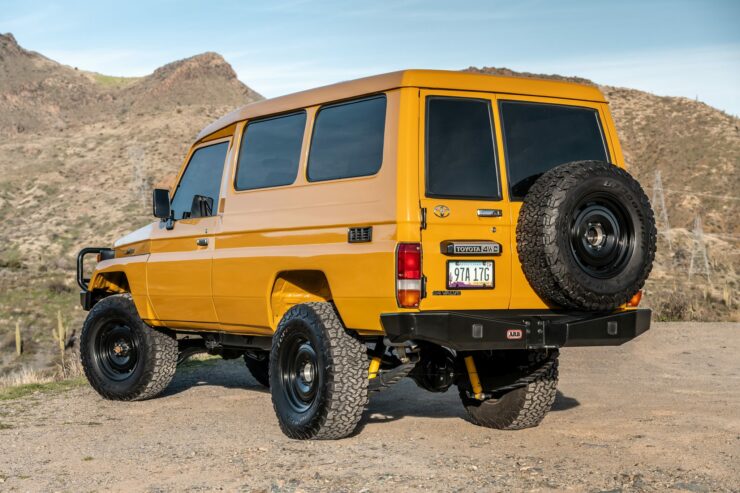
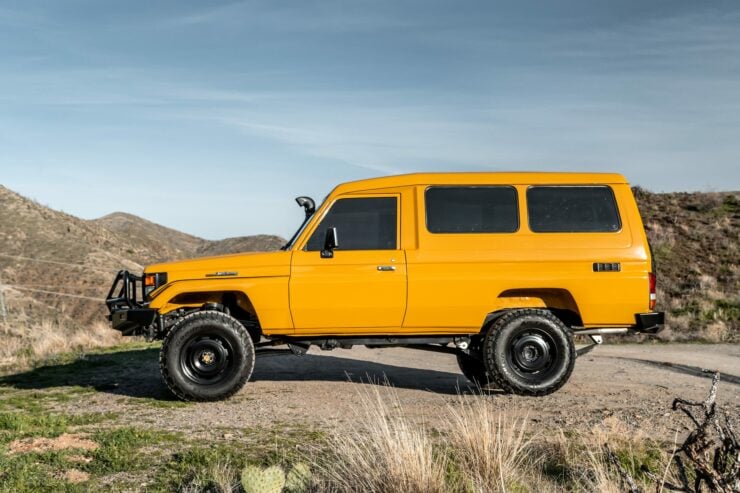
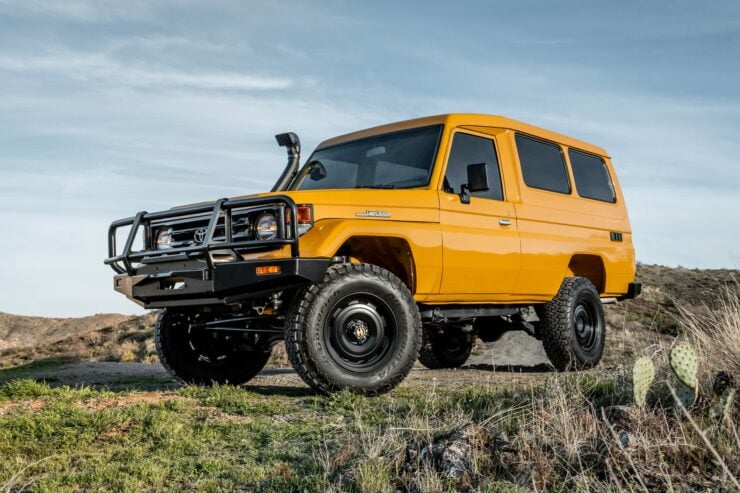
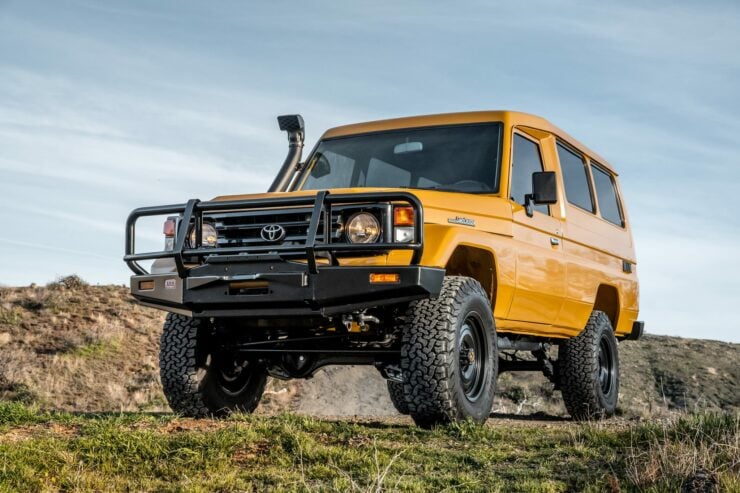
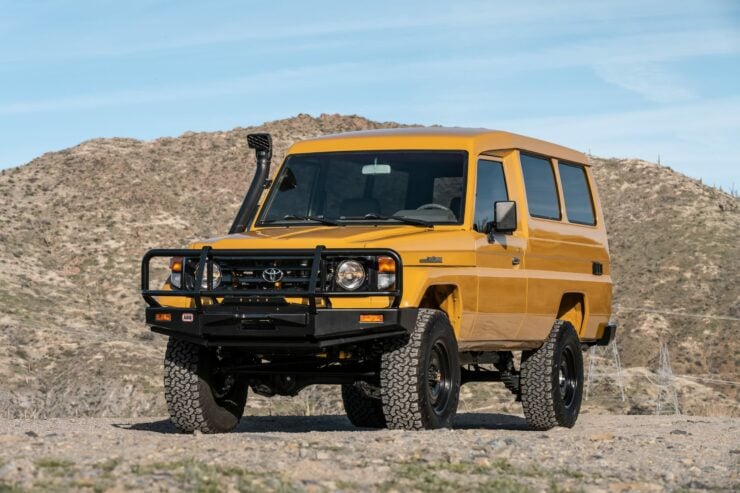
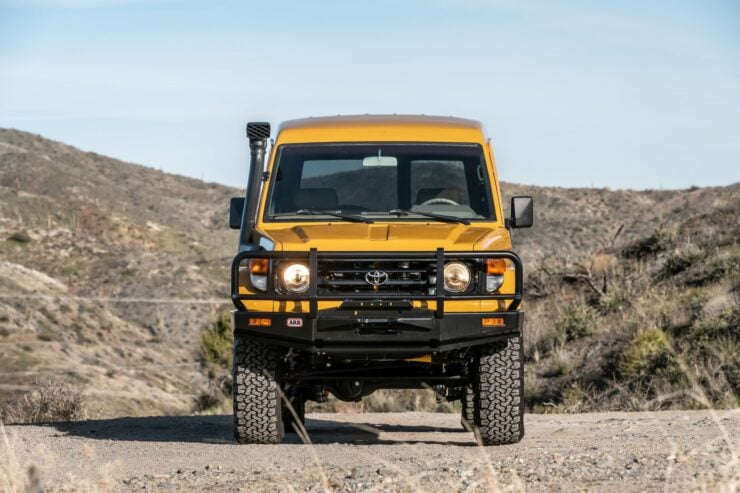
Images courtesy of Bring a Trailer

